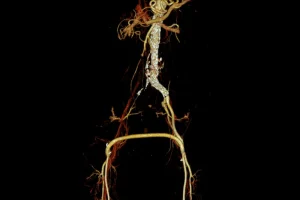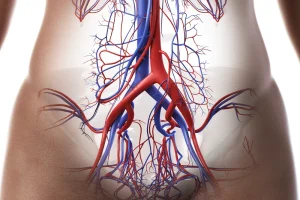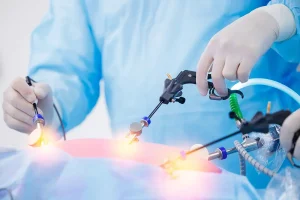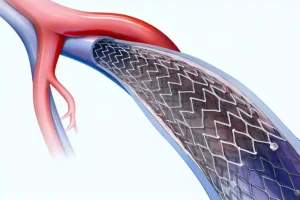Angioplasty
The minimally invasive solution to treat blocked arteries
Home » Vascular and Endovascular Surgery » Angioplasty
Medical Procedures
Vascular Techniques
Endovascular Techniques
Conditions Treated
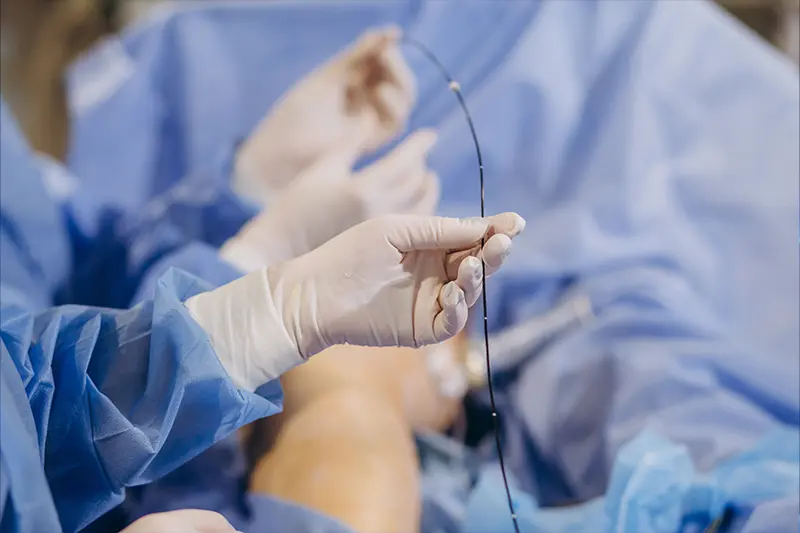
Angioplasty is a minimally invasive procedure used to open blocked or narrowed arteries, improving blood flow and preventing complications such as myocardial infarction.
At our clinic, this procedure is performed with modern equipment and by an experienced medical team to provide you with a safe and effective treatment.
Who is Angioplasty for?
- Patients with severe atherosclerosis;
- People with symptoms of angina pectoris or arterial insufficiency;
- Patients who have suffered a myocardial infarction;
- People diagnosed with peripheral arterial disease.
How is the Angioplasty procedure performed?
Angioplasty is performed under local anesthesia. The doctor inserts a catheter with a balloon into the blocked artery, which is then dilated to widen the blood vessel. In some cases, a stent is placed to keep the artery open.
Benefits of Angioplasty
Advantages of the procedure:
- Minimally invasive treatment;
- Rapid recovery;
- Reduced risk of heart attack or other complications;
- Improved quality of life.
Request an Appointment
How do you prepare for Angioplasty?
Preparing for angioplasty is essential to ensure a safe and effective procedure. Here are the main steps you should follow:
1. Pre-operative consultation
Your doctor will explain the procedure, answer your questions and evaluate your medical history, including any allergies or pre-existing medical conditions.
2. Tests and investigations
You will undergo tests such as:
- Blood tests (coagulation, kidney function, hemoleukogram);
- Electrocardiogram (ECG) to assess heart health;
- Coronary angiography, if necessary, to determine the location and severity of arterial blockages.
3. Diet before surgery
You may be asked not to eat or drink anything 6-8 hours before the procedure to prevent anesthesia-related complications.
- Medications: Tell your doctor about all medications you are taking, including dietary supplements. You may need to temporarily stop certain medications, such as anticoagulants or anti-inflammatory drugs;
- Smoking cessation: If you smoke, it is recommended that you quit before your surgery, as smoking affects blood circulation and can slow recovery;
- Hydration: Your doctor may recommend that you hydrate properly in the days leading up to your surgery, if there are no contraindications;
- Preparing for hospitalization: Angioplasty usually requires short-term hospitalization. Be prepared to stay several hours or overnight under medical observation;
- Chaperone: It is a good idea to have someone to accompany you and help you with transportation after the procedure, as you will not be able to drive immediately after surgery.
Medical Team
Meet the expert cardiologists and vascular specialists working together to ensure that every step of your treatment is safe and successful.
Frequently Asked Questions
What is angioplasty?
A minimally invasive procedure that opens blocked arteries to improve blood flow.
How long does angioplasty take?
It usually takes between 30 and 90 minutes.
How long does it take to deploy a stent?
The procedure to deploy a stent generally takes between 30 and 90 minutes, depending on the complexity of the case and the location of the affected artery. The time may vary if multiple stents are needed or if complications arise. After the procedure, the patient remains under observation for several hours or overnight for follow-up.
Is it a painful procedure?
No, because it is performed under local or general anesthesia. After surgery, discomfort is minimal and can be managed with painkillers.

